Buried Treasure in Underused, Little-known, and Untapped Civil War Resources!
In today’s blog we’re going to explore some underused, little-known, and untapped Civil War resources you can use to significantly enrich your family history. Most researchers are familiar with military pensions and service records, but the war generated many more records that you may not be aware of, and not all of them were official government records.
Supplement to the Official Records of the Union and Confederate Armies
This set of 100 volumes, edited by Janet B. Hewitt, supplements the Official Record of the Union and Confederate Armies (Wilmington, NC: Broadfoot Publishing Co., 1994-2001). The Supplement is divided into four parts (Reports, Records of Events, Correspondence, and Secret Service) and includes official accounts of battles, skirmishes, scouting expeditions, signal maneuvers, narratives of troop movements, correspondence, and intelligence files (Fig. 1). Also included are a few courts-martial, courts of inquiry, and court proceedings. Some of the material is specifically referred to in the Official Records as being “not found,” is included.
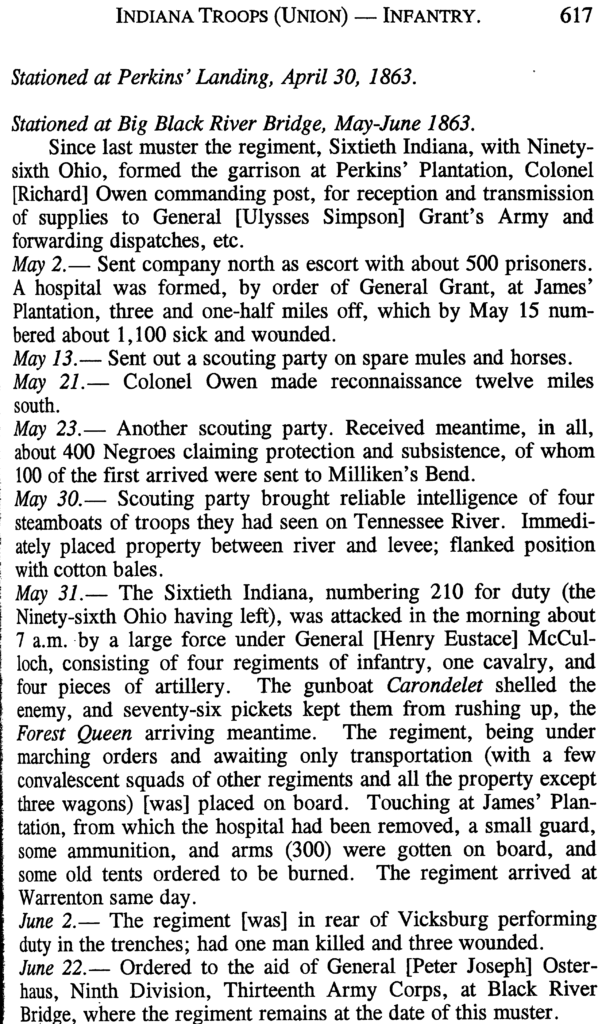
Form 5
According to The Revised Regulations for the Army of the United States, 1861, discharged soldiers were to be paid on certified accounts according to Form 5 (Art. 45, Sec. 1312, Pay Department). This form was part of the soldier’s compiled service record. Patrons often ask if parents’ names were given in Civil War compiled service records. For the most part they aren’t given, but if the army owed a soldier pay at his death, Form 5 reported that pay and who received it. Fig. 2 shows the standard US Army printed form; Fig 3 is a handwritten Confederate form, and shows that the deceased soldier’s father received his son’s pay. You can access Union and Confederate compiled service records by using the Fold3 database at the Grapevine Library, or remotely through the TexShare database program if you have a Grapevine library card and password. Call the library for the password. If you have a card from another Texas library, ask the reference librarian there for remote access information.
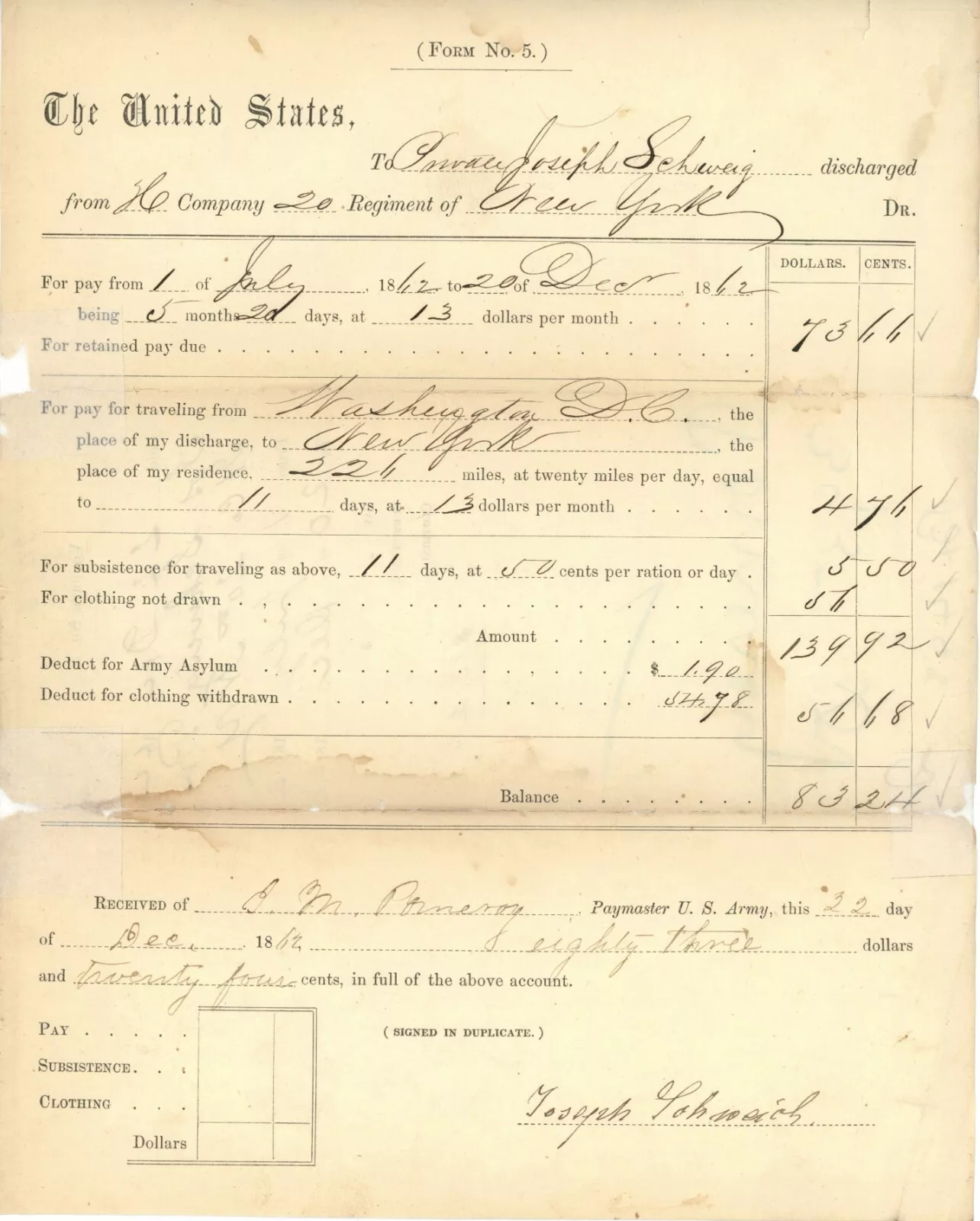
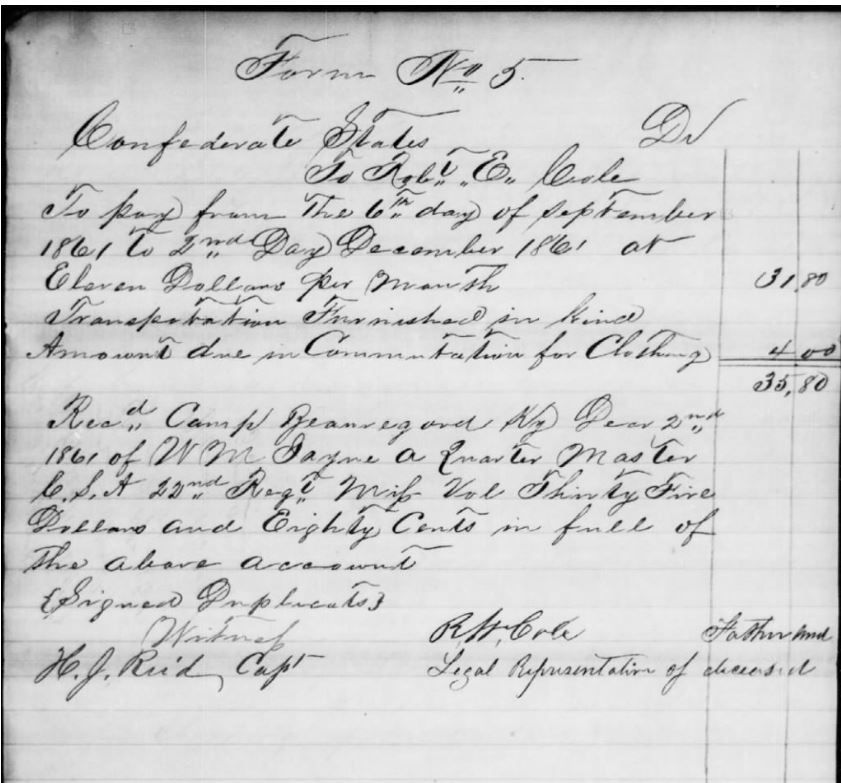
Confederate Salt Lists
Salt had long been vital for curing meat, fertilizing fields, tanning leather, and for the survival of livestock because there was no refrigeration. Prior to the Civil war, significant amounts of salt were imported from Europe, but the breakout of the Civil War resulted in Union blockades of Confederate states in order to prevent salt deliveries. This action forced those states to find alternate sources of salt, including salt springs, rock salt mines, and sea salt. These resources proved inadequate, and desperate conditions caused some southern states like Georgia and Alabama to begin rationing in order to make salt distribution fair. These states made county courts responsible for rationing; the courts then created lists of eligible families and the amounts of salt, calculated in half-bushels, that they could receive. Rationing programs provided free salt to soldiers’ widows and required payment of other families, but families of serving soldiers and widowed mothers of soldiers received discounts.
The salt lists created by the county courts are an excellent source of genealogical information. You can find heads of households, the number of children, and how much was given to each. Widowed women were identified as widows. Despite best efforts, however, there was never enough salt to carry out the plan and the salt shortage continued throughout the war.

The original Georgia salt lists, microfilmed as “Families Supplied with Salt, 1862-1864,” Adjutant and Inspector General’s Office, Commissary General’s Department,” have been digitized and are available for free at FamilySearch (Fig. 4) after you create a free account. The front index lists counties alphabetically and the pages each county covers. Records for Bulloch, Camden, Glynn, and Murray counties are missing. Information found on this microfilm also includes names of wives and widows of soldiers, widows who have a son or sons in Confederate service, names of needy families dependent on the labor of a soldier in the service, and names of disabled and discharged soldiers.
Southern Claims Commission Case Files (Unionists in the Confederacy)
The Southern Claims Commission (SCC) was created by an Act of Congress on March 3, 1871 to receive, examine, and consider claims submitted by Southern Unionist citizens. Claimants sought compensation for supplies that had been confiscated by or furnished to the US Army during the Civil War. In 1872 the SCC also considered claims against the US Navy. The SCC certified the claimant’s Union loyalty, determined appropriate value of the claim, and recommended that the US House of Representatives allow, disallow, or bar the claim. Settled claims were reported to Congress. Of the 22,298 claims, only 7,092 satisfied the rigid tests of sworn statement and cross-examination used to prove both sustained Union loyalty of the claimant throughout the war and validity of the claim. You can a list of claimants in a county from this page on the St. Louis County Library web site. Scroll down to “Geographical List of Claimants,” click the state link that includes the county where the ancestor lived between 1861-1865, and print or save the page(s).
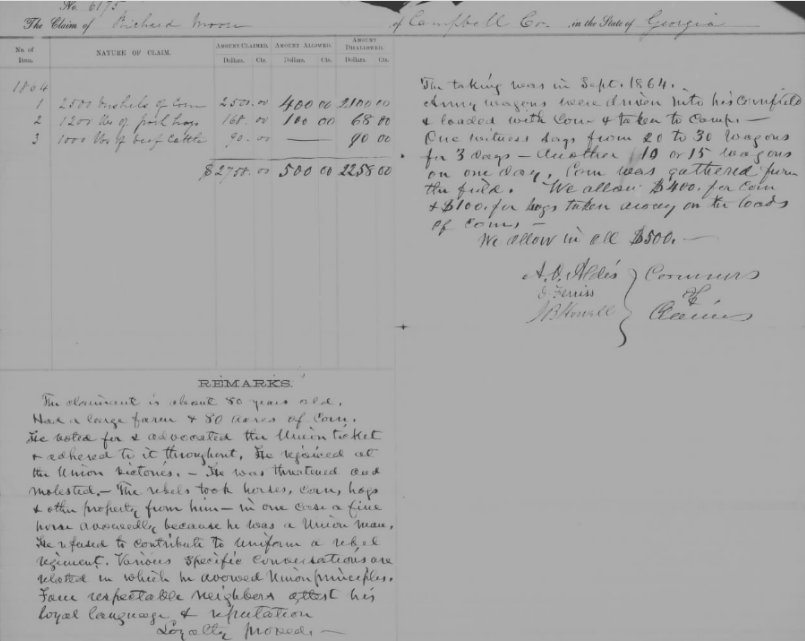
An SCC case file may contain the claimant’s petition; witness depositions; summary reports of the investigating special agent; reports from Treasury Department officials who checked captured Confederate records for indications of disloyalty; the final summary and recommendation of the commissioners; and receipt of payment. It may also include more documentary evidence such as letters of affidavit, reports by special agents, and marriage and death certificates. However, not all files include all of these records.
Allowed claims are claims that the US House of Representatives voted to approve, usually on the SCC’s recommendation, and for which the claimant received payment. Allowed claim files (Fig. 5) are available online through Fold3.com (database title: “Southern Claims”) for Alabama, Georgia, and Virginia. Ancestry.com also features allowed claim files for Alabama, Georgia, West Virginia, and Virginia (database title: “U.S., Southern Claims Commission Allowed Claims, 1871–1880”).
Disallowed claims are claims that the US House of Representatives denied, usually on the recommendation of the SCC. Barred claims are claims that were not submitted to the SCC by the deadline (March 3, 1873) and so were not considered. Disallowed and barred case files are also available online through Ancestry.com (database title: “U.S., Southern Claims Commission, Disallowed and Barred Claims, 1871–1880”) and Fold3.com (database title: “Southern Claims – Barred and Disallowed”). All allowed, disallowed, and barred SCC case files are at the National Archives in Washington, DC.
In 1883 and 1887, two congressional acts (Bowman and Tucker) permitted claimants dissatisfied with the process and the SCC’s decision could try to get Congress to reconsider barred and disallowed claims and transfer them to the US Court of Claims for further review and recommendation. To identify the case file numbers, check the publication M2007, U.S. Court of Claims Docket Cards for Congressional Case Files, 1884–1937. The publication of microfilmed docket cards on five rolls has numerous gaps and has not been digitized.
United States Records of Confederate Prisoners of War, 1861-1865
This collection consists mainly of multiple lists and registers and is available for free at FamilySearch. The FamilySearch Wiki explains it well. Information in these records generally include the reason for entry in the report, list, or ledger; name of prisoner; name of prison; and date of entry in the report, list, or ledger. Depending on the list, the following information may also be included: release or transfer date; birth date and place; death date and place; burial date and place; cause of death; age; physical description; names of relatives or friends; enlistment date and place; last residence prior to enlistment; and monies exchanged (Fig. 6). Also check out the Confederate Prisoner of War Records wiki page.

“Old Soldier” Homes
Many localities maintained soldier homes in which indigent and/or disabled eligible Union and Confederate veterans resided. The FamilySearch wiki article United States Military Old Soldiers Home Records contains a wealth of information and links to these “old soldier homes.” Most records for Confederate soldier homes are located at state archives or other archives in the state where the home was located (Fig. 7). The FamilySearch wiki has links and other information relating to these homes in each of the fifteen Confederate states.
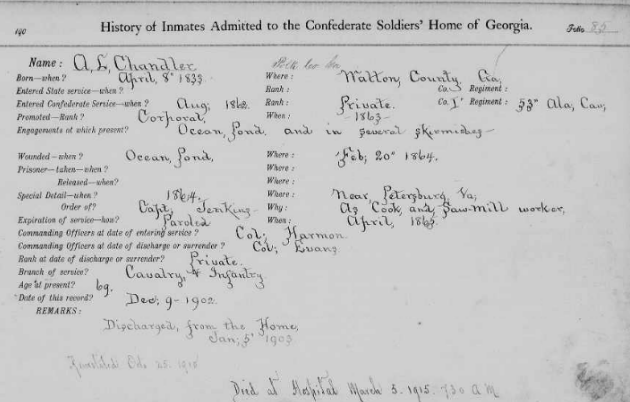
Taxes (Union and formerly Confederate)
A law passed by Congress on July 1, 1862 authorizing the first income tax as an emergency measure to finance the Union cause in the Civil War, and was the first of its kind to be paid on individual incomes by US residents. An annual tax was levied on all income in excess of $600, and legacies and distributive shares of personal property were made taxable. Residents of all states and territories not in rebellion were taxed. States that seceded were included in the tax base as soon as Union troops established control.
The president was authorized to divide the country into collection districts. Each district had a collector and an assessor. As the cornerstone of the internal revenue system, the assessor divided his district into divisions and assigned an assistant assessor for each division. Every person, partnership, firm, association, or corporation submitted to the assistant assessor of their division a list showing the amount of annual income, articles subject to the special tax or duty, and the number of goods made or sold that were to be charged with a specific or ad valorem tax or duty (Fig. 8). The assistant assessors collected these lists and compiled two general lists, each in alphabetical order. One was a list of names of all persons living in the division who were liable for taxation; the second was a list of names of all persons residing outside the division who owned property in the division. Under each person’s name, the value, assessment, or enumeration of taxable income or items and the amount of duty or tax due, was given. These lists were taken to the assessor, who examined them, corrected any errors, and approved them. This system continued until the law was repealed on December 31, 1872.
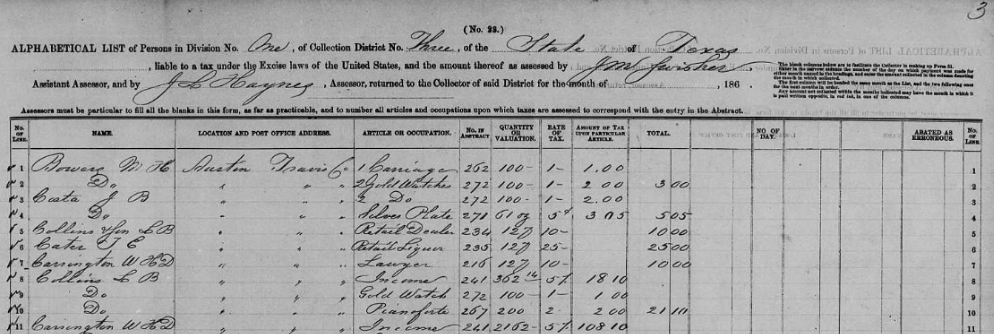
You can browse state lists covering 1862-1866 at FamilySearch and Ancestry.com. Lists covering 1867-1874 are held at the National Archives branch servicing that state. If you’re researching any counties that became part of West Virginia in 1863, you should search in both Virginia and West Virginia regardless of date. Some states were never microfilmed; their 1862-1866 lists are at the National Archives in Kansas City but the later lists are at the appropriate branch.
Unusual Union Records
Most Union burials occurred in private cemeteries most likely located in the county of the soldier’s residence, though some may have occurred in National Soldier Home cemeteries. Ancestry.com contains the database “Headstones Provided for Deceased Union Civil War Veterans, 1861-1904.” The free FamilySearch database is titled “United States Records of Headstones of Deceased Union Veterans, 1879-1903.” Most soldiers included in these databases died between about 1861 and about 1903, but the gravestones were erected between about 1879 and about 1903. They each contain over 166,000 cards of headstone contracts provided by the government but also include few veterans of the War of 1812. Cards are arranged alphabetically by surname, then given name and may include the name; rank, company, and regiment; burial place (cemetery name as well as town, county, and state in which it’s located); grave number, if applicable; death date; name of contractor who supplied the headstone; and date of contract in which the headstone was provided (Fig. 9). Some names on the cards may be difficult to read.
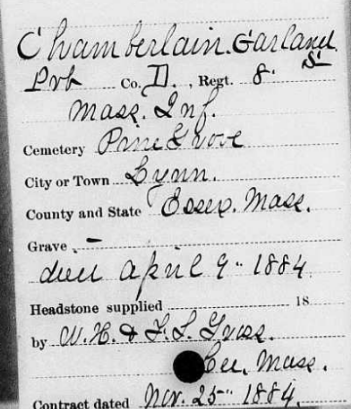
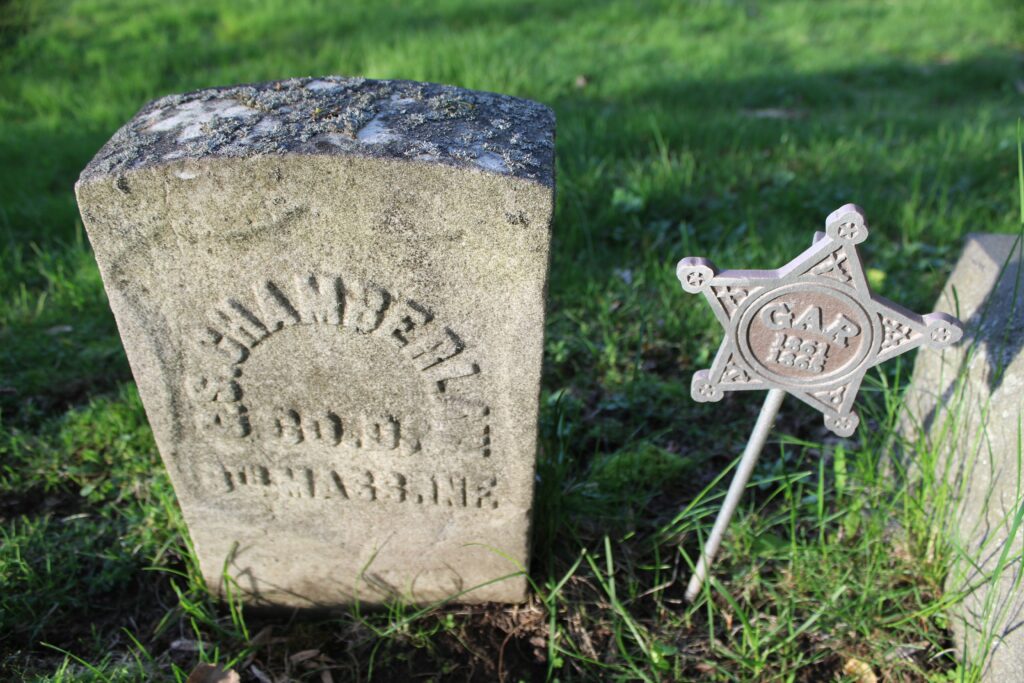
Another Ancestry.com database is “U.S. Military and Naval Academies, Cadet records and Applications, 1800-1908”, which has registers, applications, records of conduct, and more. Fig. 11 shows Ulysses S Grant as a cadet applicant.

State-Specific Military Records
There may also be state-specific records pertaining to Civil War soldiers. The Illinois Civil War Muster and Descriptive Rolls database contains information about over 285,000 Illinois soldiers in the Union Army. Each entry includes all of the information that was recorded by the Illinois Adjutant General in the original Muster and Descriptive Rolls. Entries for each roll include soldier’s name; rank; age; height; colors of eyes, hair, and complexion; occupation; marital status; birthplace; residence; date, place, and term of enrollment; name; name of mustering officer; date and place of muster out; name of mustering-out officer; and remarks concerning transfers, promotions, injuries, or special duty.
Ancestry.com has the “New York, U.S., Town Clerks’ Registers of Men Who Served in the Civil War, ca 1861-1865” database that includes surname; state, county, town; birth date; residence; rank; regiment; length of enlistment; place of enlistment; and discharge date. Other information you may find here is bounty paid; parents’ names; previous occupation; death date; cause of death; and place of burial.
You may also find records in books. For instance, Grapevine Library has The Georgia Black Book: Morbid, Macabre & Sometimes Disgusting Records of Genealogical Value by Robert Scott. Davis (Easley, SC: Southern Historical Press, c1982-c1987) which contains records of its disabled Confederate veterans who received artificial limbs.
Between 1915 and 1922, surviving Tennessee Civil War veterans were asked to respond to a questionnaire asking about their Civil War experiences, family life, pre-war lifestyle, etc. Their responses were transcribed verbatim into the five-volume set, The Tennessee Civil War Veterans Questionnaires (Easley, SC: Southern Historical Press, 1985), which Grapevine Library has.
The first law that military service impacted naturalization was during the Civil War. An act of July 1862 stated that any alien age 21 or older who had enlisted and had been honorably discharged could become a US citizen upon his petition without a declaration of intention. This means a veteran could expedite the process, but there would still be paperwork available through the court where the naturalization petition was filed.
Union Provost Marshal Files of Individual Citizens, 1861-1866, and of Two or More Citizens, 1861-1866
The Provost Marshal served as military police for the Union Army. Records in this collection deal with deserters, Confederate spies, civilians suspected of disloyalty, civilian passage through military zones, etc. In the example in Figs. 12 and 13, an official from this office arrested a man who toasted the health of Confederacy president Jefferson Davis and who then tried unsuccessfully to bribe the official with money to let him go. You can browse these records at FamilySearch, as well as the Files of Two or More Civilians.
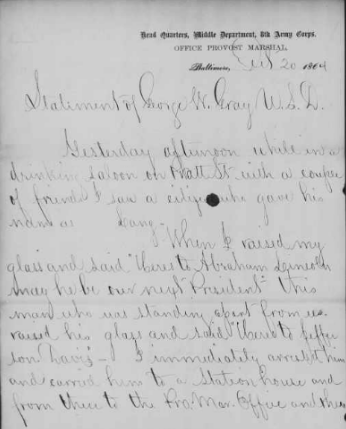
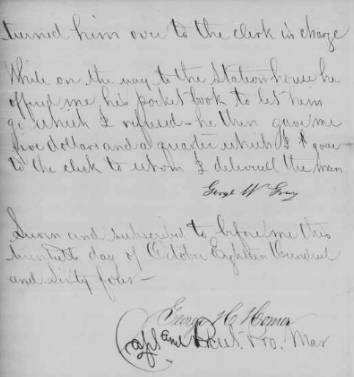
Union and Confederate Fraternal Groups
Both Union and Confederate veterans formed fraternal organizations after the Civil War. Union men organized the Grand Army of the Republic (GAR), Sons of Union Veterans of the Civil War (SUVCW), and the Military Order of the Loyal Legion of the United States (MOLLUS.).
The GAR existed from 1866-1956 and was the largest veteran’s organization in the country after the Civil War. It was a fraternal organization members were veterans of the Union Army and Navy, Marines, and Revenue Cutler Service who served in the Civil War. They supported voting rights for black veterans and lobbied Congress to establish veterans’ pensions. In 1890 the membership was 490,000. With the death of the last member of the GAR the SUVCW was formed. The SUVCW maintains a web site to document the location of repositories of records of the GAR. The GAR Records Catalog is a work-in-progress; it’s a research tool to be used to locate surviving records of local GAR chapters (Posts). Unfortunately, there is no nationwide GAR membership list. Detailed record keeping was tasked to the local Posts, so it is through their records that one must search to determine an individual Union veteran’s potential membership status.
The Military Order of the Loyal Legion (MOLLUS) was organized by Union Army officers in 1865. Their web site has announcements, membership requirements, and national and state organization information. Hereditary Membership is available for those whose officer ancestor served in the Civil War and Associate Membership for others who don’t have a qualifying ancestor. For links and more information on each of these and related groups, check out the Union Veterans and Lineage Society Records wiki page at FamilySearch.org.

Confederate veterans organized The United Confederate Veterans (UCV) in July 1889. The Sons of Confederate Veterans was founded in 1896. SCV members who are also descendants of Confederate officers or governmental officials are eligible to join the Military Order of the Stars and Bars. The web site includes genealogical researcher addresses, a Confederate genealogical research guide, news, organization purposes, membership information, and links to related sites. For links and more information on this and related groups, see the Confederate Veterans and Lineage Society Records page at FamilySearch.org.
From 1893-1932, the official publication of the UCV and lineage organizations was the Confederate Veteran, 1893-1932 (Fig. 14). The SCV later resumed publication under the same title. Features include first‑person historical accounts and obituaries of deceased veterans. Grapevine Library has a complete set of the Confederate Veteran, as well as the three-volume cumulative index of names of over 11,000 Confederate soldiers appearing in the magazine. The Library of Virginia has an online index.
Be sure to take advantage of every available resource to identify and incorporate your Civil War veterans into your family history!



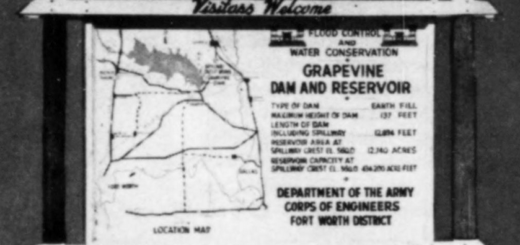
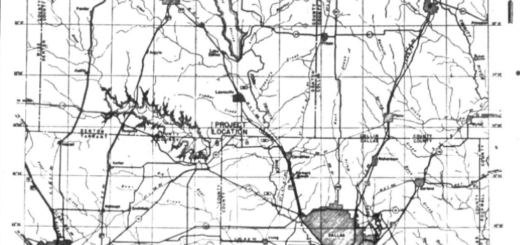
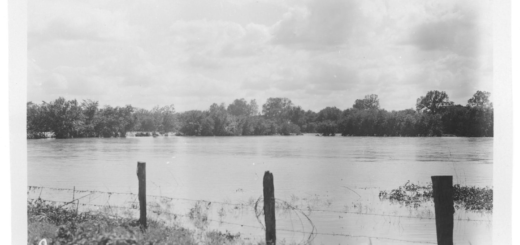
Recent Comments